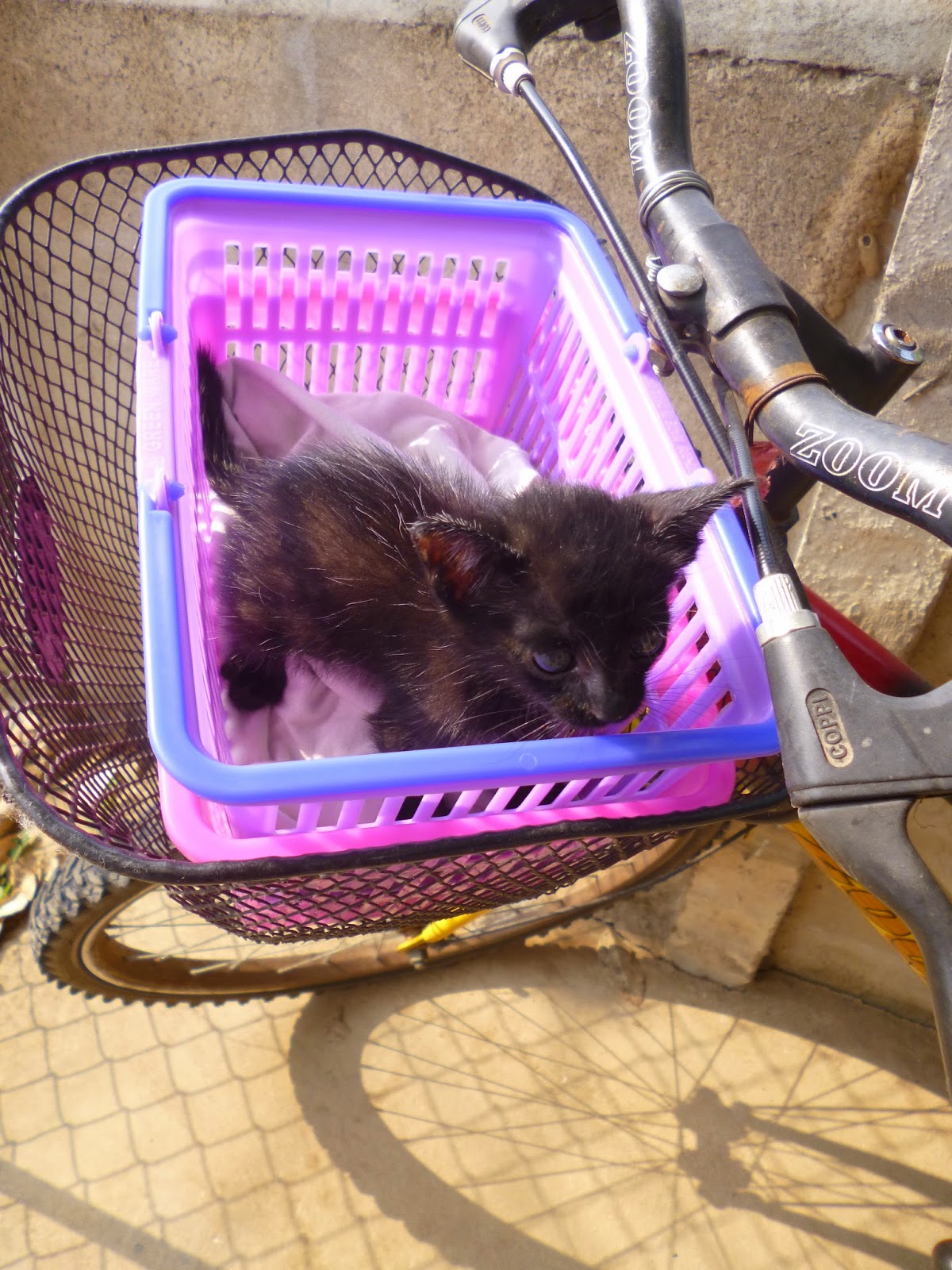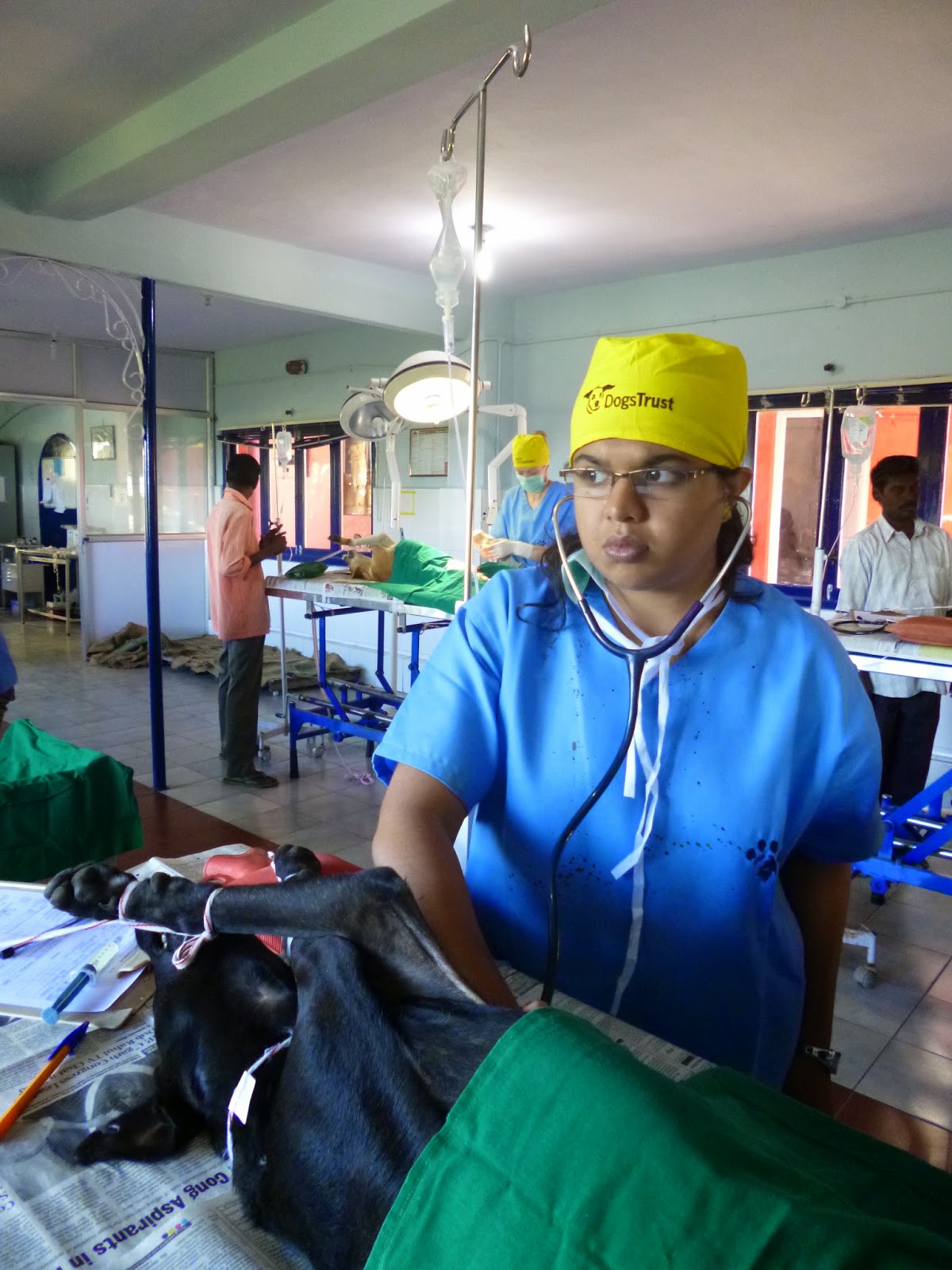I'm finally back in the States and somewhat *transiently* settled (!).
One never realizes how many photos one takes until that one has to sift through ZILLIONS of them weeks later!! I definitely need to develop a self-edit-photo-taking function before any further travel (*SIGH*)...
For those particularly with Golden Retrievers (though any allergic canine will do):
A blurry shot captured as my bus was leaving the bus station in Mysore on the way to Ooty!
Ooty is a beautiful, quiet, and green
hill station set in the Nilgiri Hills in the southwestern-central part
of India. The cooler climate (thanks to its higher altitude) was a VERY
welcome change from the humid heat in Mysore!
The International Training Centre (ITC) is run by Worldwide Veterinary Service and its objectives include education of Indian veterinarians on proper surgical techniques by providing courses, supplies, and mentorship and eradication of rabies (Mission Rabies) via mass-vaccination and education of local populations on the significance of preventive care and sterilization in combating rabies. Website: http://www.wvsitc.org/
Below are some photos from the ITC:
The kennels that house the dogs (mostly pre- and post-surgical; some are hospitalized for other conditions including: vomiting, diarrhea, inappetance, fractures, other soft-tissue wounds that require daily medical management).
Given the limited space, 4-6 dogs are commonly housed together per kennel pre- and post-operatively. Amazingly, they get along well for the most part (of course, there are the occasional squabbles, but they ultimately "work it out" amongst themselves!). You can see that one of this foursome is a bit more...excitable, shall we say? This is the best of multiple attempted photos of him/her! :-)
Few things in this world are as expressive as a dog's eyes...
A more rambunctious fellow despite his gray muzzle! His hind feet were dangling way off the ground but he seemed quite calm given the better view afforded by his new height. He eventually managed to wriggle his head back through the bars and return to earth without issue. :-)
Most of the kennels had beautiful little windows that let in natural light. Here's a scrappy old soul who's apparently been in his share of tiffs.
This is a very sick puppy who likely has viral enteritis (parvovirus suspected) and is receiving IV fluids in addition to antibiotics to help support her through this dreadful illness.
A male dog, post-sedation, receiving a local anesthetic prior to castration. We taught students (who were both Indian veterinarians and UK veterinary students) anesthetic and analgesic management as part of this course.
One of the course leaders (Dr. Vijay in blue) instructing veterinary technicians/assistants (who traveled to Ooty from Pondicherry to take this course) on surgical preparation and monitoring of anesthesia immediately after induction.
One of our "Pondicherry Boys" monitoring anesthesia while the surgeon scrubs for surgery. All patients were placed on intravenous fluids to help maintain blood pressure and to ensure a port for administering injectable drugs for anesthetic maintenance.
A couple of our UK veterinary students practicing aseptic scrubbing and proper "gloving up" for surgery at the Scrubbing Station!
One of our Indian veterinarians monitoring anesthesia for the surgeon, who happens to be her mother, who is also a veterinarian and taking this course!
Headlamps, like in Botswana, are very handy for times when the power goes out or when surgical lamps break down...repairing the latter take quite a bit of time and money.
Five tables were simultaneously in use during surgery time. Things could become quite hectic in a hurry!
Snoozing off the anesthesia! Hot-water bottles and burlap sacks are in place to help keep their body temperatures up, as their temperatures can fall quite dramatically intra-operatively secondary to surgical time and the anesthetic agents. In addition, at the time, Ooty's ambient temperature was cool, and this was an added factor in causing hypothermia.
One of the ITC vets exchanging a moment with a patient during morning rounds. Most of these dogs were SO GOOD about being handled and examined post-operatively!
Assessing for pain, inflammation, and any other abnormalities at the surgical site post-operatively. Daily rounds of all patients were done every morning and evening to check on their recovery.
AWWWWWWW--it's NOT only Doug who has to wear the Cone Of Shame... ;-)


















































